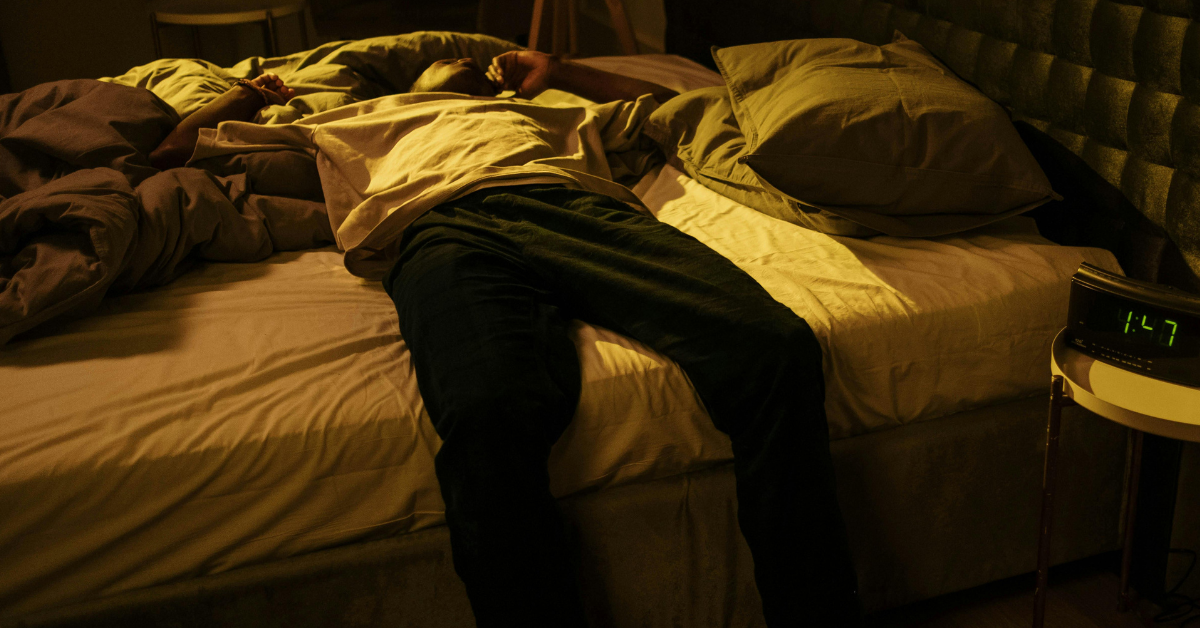Bipolar disorder is a complex mental health condition characterized by unusual shifts in mood, energy levels, and activity levels. People with bipolar disorder can experience extreme changes in their emotions and behavior, going from periods of high energy and happiness (mania) to periods of sadness and low energy (depression).
These mood swings can have a profound impact on the lives of individuals with bipolar disorder:
- Mood Swings: People may experience intense emotional highs (mania) and lows (depression).
- Energy Levels: Manic phases might lead to increased energy and hyperactivity, while depressive phases could result in fatigue and diminished motivation.
- Activity Levels: During manic episodes, people often engage in risky or impulsive behaviors; conversely, depressive states can cause withdrawal from daily activities.
Understanding the nature and effects of bipolar disorder fosters empathy and encourages those affected to seek appropriate treatment.
Types of Bipolar Disorder
Bipolar I Disorder
Bipolar I disorder is characterized by its hallmark manic episodes. These episodes are periods of abnormally elevated mood and energy levels that can significantly disrupt daily life. During a manic episode, individuals may experience:
- Elevated Mood: An unusually high and euphoric mood.
- Increased Energy: A surge in energy levels, often leading to hyperactivity.
- Impulsive Behavior: Engaging in risky activities without considering consequences.
- Reduced Need for Sleep: Feeling rested after only a few hours of sleep.
These symptoms can be intense and may require hospitalization to ensure the individual’s safety.
Bipolar II Disorder
A different pattern emerges with Bipolar II disorder, where individuals experience hypomanic episodes. These episodes are similar to manic episodes but are less severe and do not usually lead to significant impairments in social or occupational functioning. Symptoms of hypomanic episodes include:
- Elevated mood and increased energy, though to a lesser extent compared to full-blown mania.
- Enhanced creativity and productivity, often perceived positively by the individual.
- Reduced need for sleep, although not as extreme as in manic episodes.
Understanding these differences helps in recognizing the unique challenges each type presents and tailoring appropriate treatment strategies.
Causes and Risk Factors
Genetic Factors
Bipolar disorder often runs in families, suggesting a strong genetic component. Research indicates that individuals with a first-degree relative, such as a parent or sibling, who has bipolar disorder are more likely to develop the condition themselves. This familial pattern highlights the role of genetic factors in predisposing individuals to bipolar disorder.
Brain Structure Abnormalities
Abnormalities in brain structure and function have been associated with bipolar disorder. Studies using neuroimaging techniques have identified differences in the brain regions responsible for mood regulation, such as the amygdala and prefrontal cortex. These abnormalities can affect how the brain processes emotions and responds to stress, contributing to the development of mood episodes.
Environmental Factors
Environmental triggers also play a significant role in bipolar disorder. Stressful life events, such as trauma or significant loss, can precipitate mood episodes in vulnerable individuals. Substance abuse, sleep disturbances, and major life changes can exacerbate symptoms or trigger new episodes. Understanding these environmental factors is crucial for managing and reducing the risk of bipolar episodes.
By exploring the intricate interplay between genetic predisposition, brain structure abnormalities, and environmental factors, we gain a deeper understanding of what causes bipolar disorder. This knowledge can guide effective interventions and support strategies aimed at mitigating the impact of this complex condition on individuals’ lives.
Diagnosis and Assessment
Diagnosing bipolar disorder involves a comprehensive process designed to accurately identify the condition. A psychiatric evaluation is typically the first step, where a mental health professional conducts an in-depth interview. This evaluation delves into an individual’s personal history, family history of mental health conditions, and any previous psychiatric or medical treatments.
A crucial part of the diagnostic process is the mood symptom assessment. During this phase, clinicians closely observe and document symptoms such as mood swings, changes in energy levels, sleep patterns, and behavior. This helps differentiate between the various types of bipolar disorder and other mental health conditions with similar presentations.
Key Components of the Diagnostic Process
Psychiatric Evaluation
- In-depth interviews
- Personal and family mental health history
- Previous treatments
Mood Symptom Assessment
- Observation and documentation of mood swings
- Analysis of changes in energy and activity levels
- Assessment of sleep patterns and behavior changes
Understanding these components is essential for an accurate diagnosis, which forms the foundation for effective treatment planning. This meticulous approach ensures that individuals receive personalized care tailored to their specific needs.
Treatment Approaches for Bipolar Disorder
1. Medication
Treating bipolar disorder often involves a multifaceted approach, with medication playing a central role. Medications can help balance mood fluctuations and prevent relapses, making them crucial for long-term management.
The Role of Mood Stabilizers
Mood stabilizers are frequently prescribed to individuals with bipolar disorder. These medications help to:
- Balance mood fluctuations: Mood stabilizers work by leveling out the highs and lows associated with manic and depressive episodes.
- Prevent relapses: Consistent use of mood stabilizers can reduce the likelihood of future episodes, promoting long-term stability and well-being.
Types of Mood Stabilizers
- Lithium: A classic mood stabilizer often used as a first-line treatment for bipolar disorder.
- Valproate (Valproic Acid): An anticonvulsant that also serves as a mood stabilizer.
- Lamotrigine: Another anticonvulsant used primarily for the maintenance treatment of bipolar disorder.
- Carbamazepine: An anticonvulsant and mood stabilizer, often used when other medications are not effective.
Each medication has its specific benefits and potential side effects, making it important to work closely with a healthcare provider to find the best fit.
Benefits and Considerations of Antipsychotic Medications
Antipsychotic medications are often used alongside mood stabilizers in treating bipolar disorder. These medications can be particularly effective during manic or mixed episodes where psychosis might be present. Key benefits include:
- Rapid symptom control: Antipsychotics can quickly bring symptoms under control during acute manic or mixed episodes.
- Management of psychosis: In cases where psychotic symptoms occur, antipsychotics help manage delusions and hallucinations.
Types of Antipsychotic Medications
- Atypical Antipsychotics: Second-generation antipsychotics commonly prescribed for bipolar disorder.
- Olanzapine (Zyprexa): Often used in combination with fluoxetine for bipolar depression.
- Risperidone (Risperdal): Effective in managing manic or mixed episodes.
- Quetiapine (Seroquel): Used for both manic and depressive episodes.
- Aripiprazole: Utilized for manic and maintenance phases.
- Ziprasidone: Used for acute mania and mixed episodes.
- Lurasidone: Approved for bipolar depression.
When considering antipsychotic treatment, it’s essential to be aware of potential side effects such as weight gain, metabolic changes, and sedation.
Types of Antidepressant Medications
While generally used cautiously due to the risk of triggering manic episodes, certain antidepressants may be prescribed:
- SSRIs (Selective Serotonin Reuptake Inhibitors): Such as fluoxetine.
- SNRIs (Serotonin-Norepinephrine Reuptake Inhibitors): Such as venlafaxine.
2. Psychotherapy
Medication is just one piece of the puzzle in managing bipolar disorder. Psychotherapy offers another vital component by addressing the emotional and psychological aspects of the condition.
Cognitive-Behavioral Therapy (CBT)
Cognitive-behavioral therapy (CBT) is widely recognized as an effective modality for managing bipolar symptoms. CBT focuses on:
- Identifying negative thought patterns: Patients learn to recognize and challenge harmful thoughts that contribute to mood swings.
- Promoting stability: Through skill-building exercises, individuals develop strategies to maintain emotional balance.
Therapists work collaboratively with patients to set realistic goals, improve coping mechanisms, and enhance overall quality of life.
3. Lifestyle Changes
In addition to medication and psychotherapy, lifestyle changes play a significant role in managing bipolar disorder. These changes focus on holistic well-being and can have a profound impact on daily functioning.
Self-Care Practices
Maintaining a regular sleep schedule is crucial for individuals with bipolar disorder. Irregular sleep patterns can trigger mood episodes. Engaging in stress-reduction activities such as yoga, meditation, or gentle exercise also supports mental health.
Effective Stress Management Techniques
Living with bipolar disorder requires effective stress management techniques. Strategies may include:
- Mindfulness practices: Incorporating mindfulness exercises helps manage stress levels.
- Routine establishment: Developing a structured daily routine provides stability.
- Healthy relationships: Cultivating positive relationships reduces stress and offers emotional support.
By integrating these approaches—medication, psychotherapy, and lifestyle adjustments—individuals with bipolar disorder can achieve better management of their condition and lead fulfilling lives filled with warmth and peace.
2. Psychotherapy
Treating bipolar disorder often requires a multifaceted approach, combining medication, psychotherapy, and lifestyle changes. While mood stabilizers and antipsychotics play critical roles in managing symptoms, psychotherapy offers invaluable support in promoting long-term stability and emotional well-being.
Cognitive-Behavioral Therapy (CBT)
Cognitive-behavioral therapy (CBT) is widely recognized as an effective modality for managing bipolar symptoms. It focuses on helping individuals understand the link between their thoughts, emotions, and behaviors, aiming to alter negative patterns that contribute to mood swings.
Key aspects of CBT in treating bipolar disorder include:
- Identifying Negative Thought Patterns: Through guided sessions, individuals learn to recognize distorted thinking that can trigger or exacerbate mood episodes.
- Developing Coping Strategies: CBT equips individuals with practical tools to manage stress and anxiety, reducing the likelihood of depressive or manic episodes.
- Structured Problem-Solving: By breaking down overwhelming issues into manageable steps, individuals can tackle challenges more effectively without triggering extreme mood fluctuations.
- Improving Emotional Regulation: Techniques such as mindfulness and relaxation exercises are incorporated to help manage emotional responses more calmly.
Benefits of CBT
CBT offers several benefits for those living with bipolar disorder:
- Enhanced Self-Awareness: Individuals gain deeper insights into their condition, which fosters better self-monitoring and early intervention during mood shifts.
- Empowerment: Learning new coping mechanisms empowers individuals to take an active role in their treatment, boosting confidence and resilience.
- Supportive Environment: Regular therapy sessions provide a safe space for expressing feelings and concerns, contributing to overall mental health improvement.
Combining psychotherapy with medication forms a comprehensive approach to managing bipolar disorder. This holistic method not only addresses chemical imbalances but also nurtures emotional well-being through structured therapeutic interventions.
3. Lifestyle Changes
Treating bipolar disorder involves not only medication and psychotherapy but also significant lifestyle changes. These adjustments play a crucial role in maintaining stability and enhancing the quality of life for individuals living with this condition.
Importance of Self-Care Practices
Self-care practices are essential in managing bipolar disorder effectively:
- Regular Sleep Schedule: Consistency in sleep patterns helps regulate mood swings. Aim to go to bed and wake up at the same time every day.
- Healthy Diet: A balanced diet supports overall well-being. Nutrient-rich foods can help maintain energy levels and improve mood stability.
- Physical Activity: Regular exercise is known to reduce stress, improve mood, and boost physical health.
- Mindfulness and Meditation: Incorporating mindfulness exercises or meditation practices can foster emotional balance and reduce anxiety.
Effective Stress Management Techniques
Managing stress is vital for those with bipolar disorder as stress can trigger mood episodes:
- Relaxation Techniques: Practices such as deep breathing, progressive muscle relaxation, or yoga can be very helpful.
- Routine Building: Establishing a daily routine provides structure and predictability, which can be calming.
- Social Connections: Engaging with supportive friends or family members helps alleviate feelings of isolation and provides emotional support.
Adopting these lifestyle changes creates a comprehensive approach to managing bipolar disorder alongside medication and psychotherapy. By integrating self-care practices and effective stress management techniques, individuals can significantly enhance their ability to navigate the challenges posed by this condition.
Coping with Bipolar Disorder on a Daily Basis
Living with bipolar disorder requires ongoing attention and care. One of the most effective coping strategies for bipolar disorder is self-monitoring, which involves regularly tracking your mood, energy levels, and other symptoms.
The Significance of Self-Monitoring Moods
Self-monitoring can help you recognize patterns and triggers that may lead to mood episodes. Identifying these early signs allows for timely intervention, potentially preventing a full-blown episode.
Techniques for Self-Monitoring:
- Mood Journals: Keeping a daily journal where you note down your mood, sleep patterns, medication intake, and stress levels can provide valuable insights over time.
- Mood Tracking Apps: There are several apps designed specifically for tracking moods and symptoms. These can offer visual graphs and charts that make it easier to identify trends.
- Rating Scales: Using a simple numerical scale (e.g., 1 to 10) to rate your mood each day helps to quantify your emotional state.
Importance of Early Intervention
Responding early to changes in mood or behavior can significantly reduce the severity of an episode.
Steps for Early Intervention:
- Medication Adjustment: Consulting with your healthcare provider about any noticeable changes might necessitate adjustments in medication.
- Therapeutic Techniques: Engaging in cognitive-behavioral techniques or other therapeutic strategies can help manage symptoms before they escalate.
- Support Network: Reaching out to loved ones or mental health professionals at the first sign of a mood shift ensures you have the necessary support.
Regular self-monitoring combined with early intervention fosters a proactive approach to managing bipolar disorder. This not only helps in reducing the frequency and intensity of mood episodes but also enhances overall well-being.
2. Building Strong Support Systems
Navigating the complexities of bipolar disorder can be daunting, but cultivating a reliable support network offers immense benefits. Support systems are invaluable in providing emotional stability, practical assistance, and a sense of belonging.
Benefits of a Reliable Support Network
- Emotional Stability: Engaging with loved ones who understand your condition can create a safe space to express feelings and concerns. Emotional validation from friends and family members helps mitigate feelings of isolation and loneliness.
- Practical Assistance: A strong support system includes individuals who can offer practical help during challenging times. This might involve helping with daily tasks, attending medical appointments, or reminding you to take medications.
- Sense of Belonging: Being part of a supportive community fosters a sense of belonging and acceptance. This connection reduces the stigma often associated with mental health conditions, making it easier to navigate social environments.
Key Elements of Effective Support Systems
- Loved Ones: Family members and close friends play an integral role in your support network. Their understanding and patience are crucial as they provide continuous encouragement and motivation.
- Mental Health Professionals: Regular consultations with therapists, psychiatrists, and counselors ensure professional guidance tailored to your needs. Mental health professionals offer coping strategies for bipolar disorder, prescribe necessary medications, and monitor progress.
- Support Groups: Participating in support groups allows you to share experiences with others facing similar challenges. These groups provide a platform for mutual learning and emotional support.
- Community Resources: Utilizing community resources such as local mental health organizations connects you with additional support services and information.
Incorporating diverse elements into your support system enriches your coping strategies for bipolar disorder. Self-monitoring techniques combined with robust external support create a comprehensive approach to managing this condition.
By nurturing these relationships and leveraging available resources, individuals living with bipolar disorder can navigate their journey with greater resilience and optimism.
Finding Help and Support for Bipolar Disorder
Finding the right support and resources for bipolar disorder is crucial in managing the condition effectively. Here are some reputable organizations that offer valuable assistance:
Organizations Providing Support
- National Alliance on Mental Illness (NAMI): NAMI provides extensive resources, including educational materials, support groups, and a helpline to assist those living with bipolar disorder.
- Depression and Bipolar Support Alliance (DBSA): DBSA offers peer-led support groups, wellness tools, and educational resources specifically tailored for bipolar disorder.
- Mental Health America (MHA): MHA provides screening tools, information on mental health conditions, and connections to local resources.
Websites for Clinical Research
Exploring clinical research can offer deeper insights into bipolar disorder. Reliable websites to consider include:
- National Institute of Mental Health (NIMH): NIMH’s website features current research findings, clinical trials, and detailed information about bipolar disorder.
- PubMed: A comprehensive resource for scientific studies and publications related to mental health conditions, including bipolar disorder.
- ClinicalTrials.gov: This database lists ongoing clinical trials for new treatments and interventions for bipolar disorder, offering opportunities to participate in groundbreaking research.
These resources for bipolar disorder can provide vital information and support for those affected by this challenging condition.
Conclusion
Seeking professional help is a crucial step for anyone experiencing symptoms of bipolar disorder. Mental health professionals can provide guidance, support, and effective treatment plans tailored to individual needs.
- Professional Help: Adherence to prescribed treatment plans is key to managing mood fluctuations and maintaining stability. Medications, therapy sessions, and lifestyle adjustments can significantly improve quality of life.
Raising awareness about bipolar disorder helps reduce the stigma associated with mental health conditions. Open conversations and education can foster a more understanding and supportive environment for those affected.
- Awareness and Support: By promoting knowledge and compassion, we create a community that values mental health and supports individuals on their journey to recovery.




